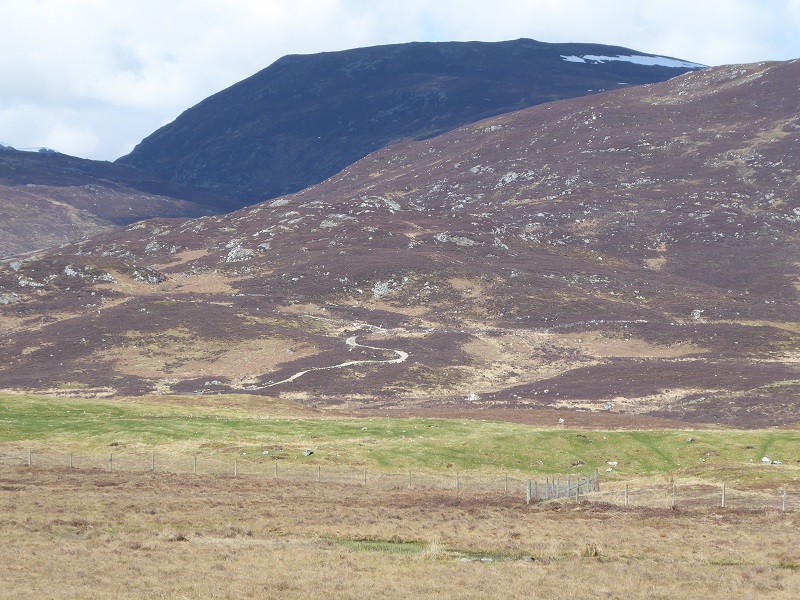
Savill’s, acting on behalf of the Pitmain Estate, submitted in early June a retrospective Planning Application to Highland Council for the new unlawful track in Glen Banchor which I had featured last November and which I had reported to the Cairngorms National Park Authority. They had been forced to do this because the CNPA had, to their credit, taken action and issued what is known as a Section 33a Notice. This requires a Developer to submit a planning application for a development already carried out. The fact that Savill’s, who manage the Pitmain and Glen Banchor Estates on behalf of Abdul Majid Jafar, allowed this track to be created without planning permission tells you something. The CNPA have now called the application (see here) which means it should be considered in due course by the National Park Planning Committee.
On the information presented by Savill’s, I believe the CNPA will be fully justified in rejecting the application and requiring the ground to be restored to its original state. It also appears from the information in the application and other evidence on the ground that this new track is only part of a much wider disregard of planning requirements in respect of hill tracks and this poses significant threats to the landscape in the National Park. The rest of this post takes a more detailed look at the issues.
What’s wrong with the retrospective Planning Application
Savill’s application is limited to the steeper section of track up the hillside and does NOT include the work that has been done to the track along the top of the fine esker which crosses the moor.

The truth is that, while there was an old landrover track which ran along the top of the esker, major works were undertaken last year which transformed this “track” into something completely different.
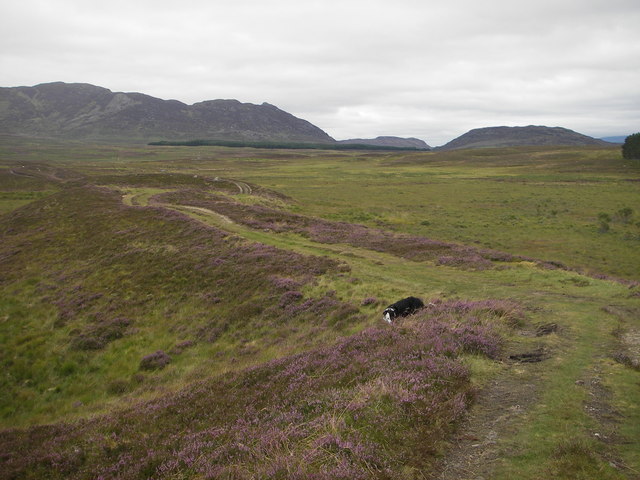
The photo above is a fair representation of how the track used to look – I have seen a video from a year ago on Facebook that confirms it was not that different then. Contrast this with the how it looked last November:
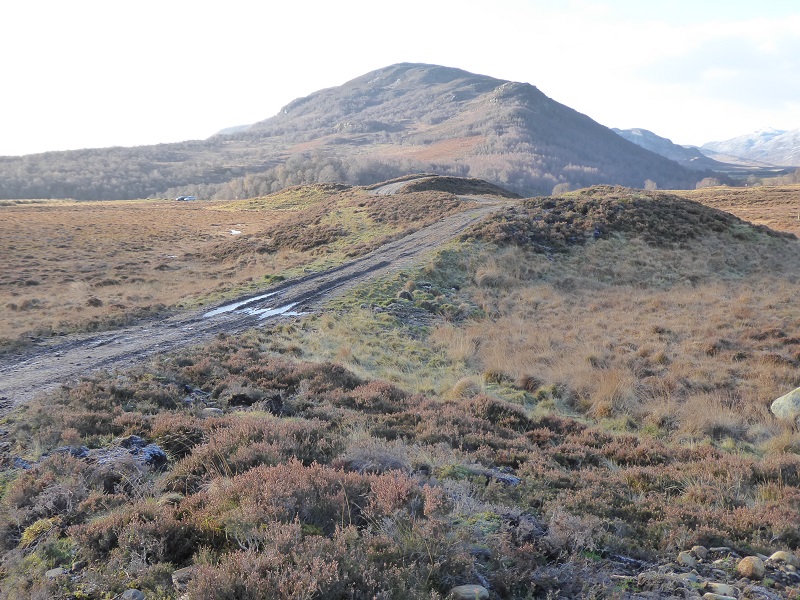
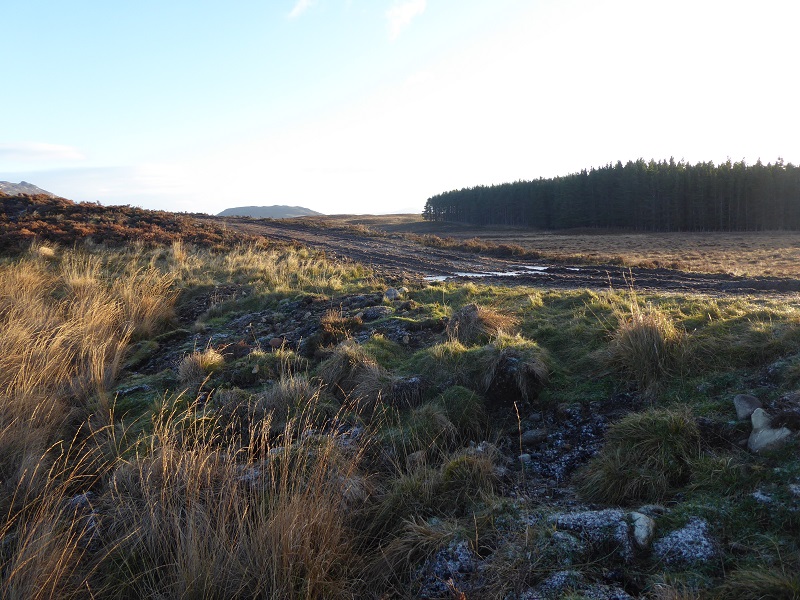
There is clear evidence therefore that extensive recent work had taken place across the whole length of the track. The point here is that Savill’s are not proposing to do ANYTHING to remedy the damage to the landscape that has taken place on the lower section of track. While there is some evidence that there have been attempts to restore the damage here subsequently, this section of track MUST be included in the retrospective application to ensure its fully restored if planning permission is refused OR any conditions accompanying retrospective approval apply to the WHOLE track.
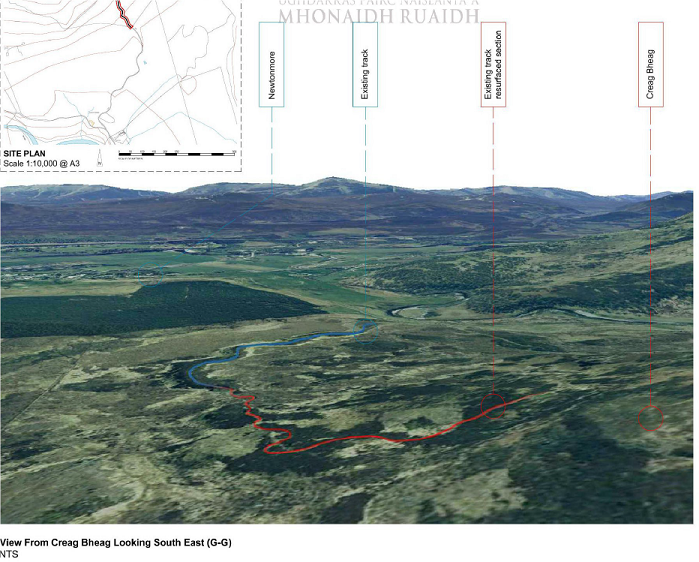
The second major deficiency in the application is there is NO consideration of the landscape impact of the track and whether or how it could be ameliorated. The track crosses open bog and moorland behind the village of Newtonmore in an area which is extremely well used recreationally. The track has thus had a massively adverse impact on the immediate recreational experience.
It can also be seen from afar (see top photo) but there is none of the usual landscape impact assessments one would expect in an application such as this. Every reason for the CNPA to reject the application and I hope their Landscape Adviser, who has been asked to report on this, sets out in more detail the landscape impact of not just the section of track included in the application but the section which runs along the esker below.
The third issue is that the section of track that is in the Application problem cannot meet SNH’s Good Practice Guide despite the claims from Savill’s:
 The reason? Sections appear to be too steep – SNH says NO track should exceed 14 degrees – and as a consequence were already eroding back in November.
The reason? Sections appear to be too steep – SNH says NO track should exceed 14 degrees – and as a consequence were already eroding back in November.
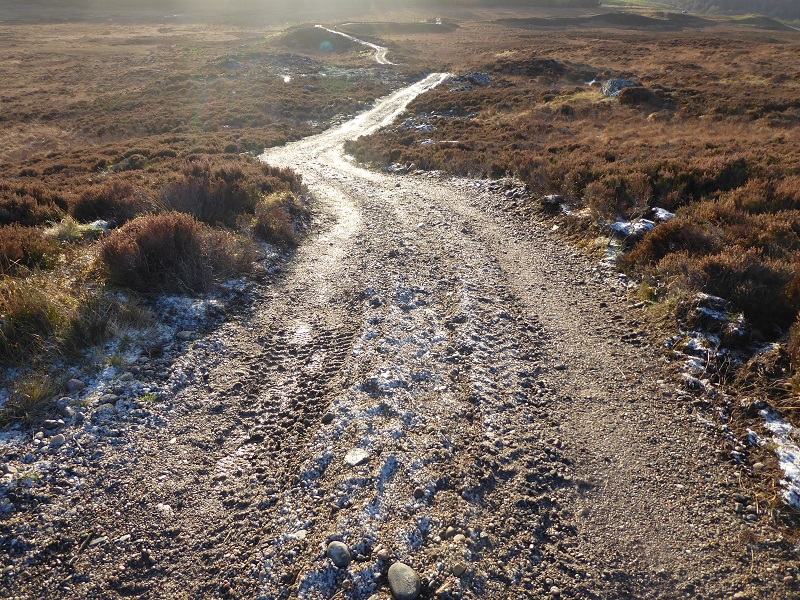
The wider issue here is there is very little detail in the proposals of just how Savill’s would propose to reduce the landscape impact of the track and improve how its been constructed despite having six months to do this.

Its unclear, for example, how Savill’s propose to restore the turning area at the top of the track.
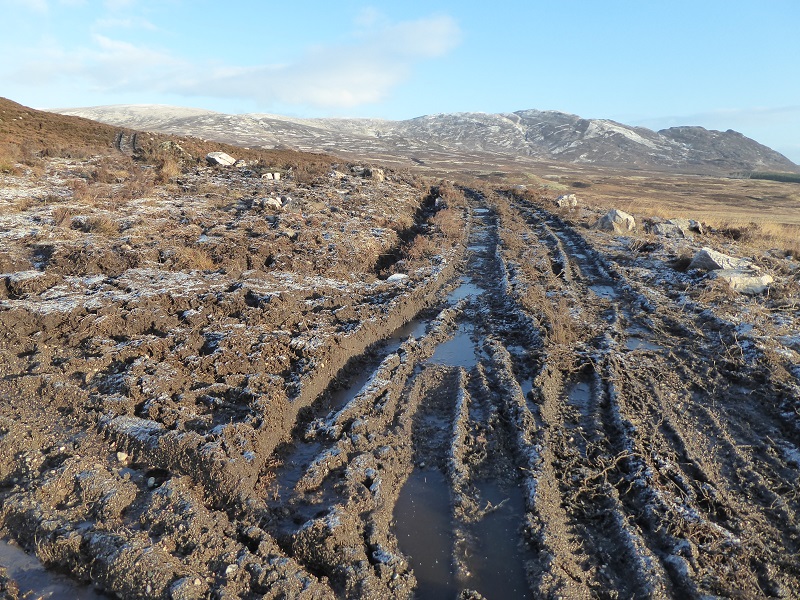
There is also nothing in the application about whether Savill’s/the estate wish to continue using the new track to drive vehicles further up and across the hillside. The estate’s use of vehicles in the way has already created massive further landscape scars and – as the boulders in the above photo show – they are already effectively creating a new track but have said nothing about this in the Planning Application.
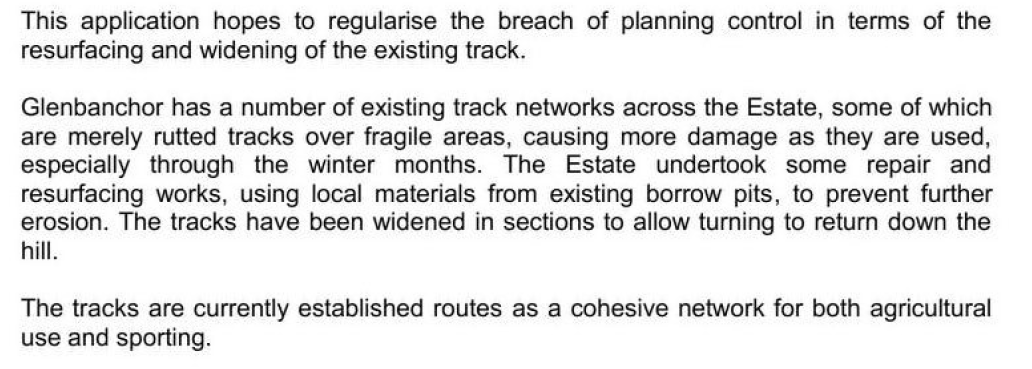
If the CNPA did, for any reason, decide to consent to the new track at the very least it should apply conditions prohibiting its use as a stepping point for vehicles to drive further across the hillside and connect up with other tracks.
Objections to the Planning Application can be officially lodged until Wednesday 4th July and you can do so via the Planning Portal (see here).
Another new track on the Pitmain Estate – by the Allt Mhor
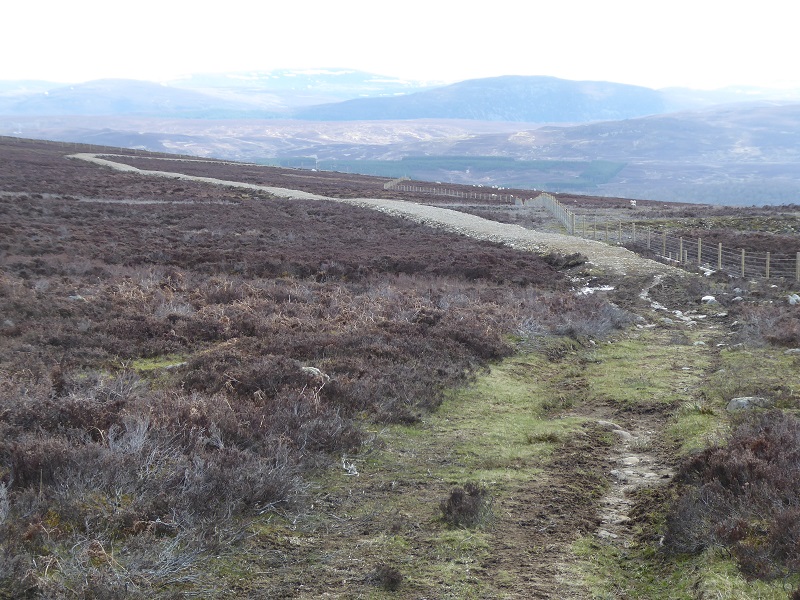
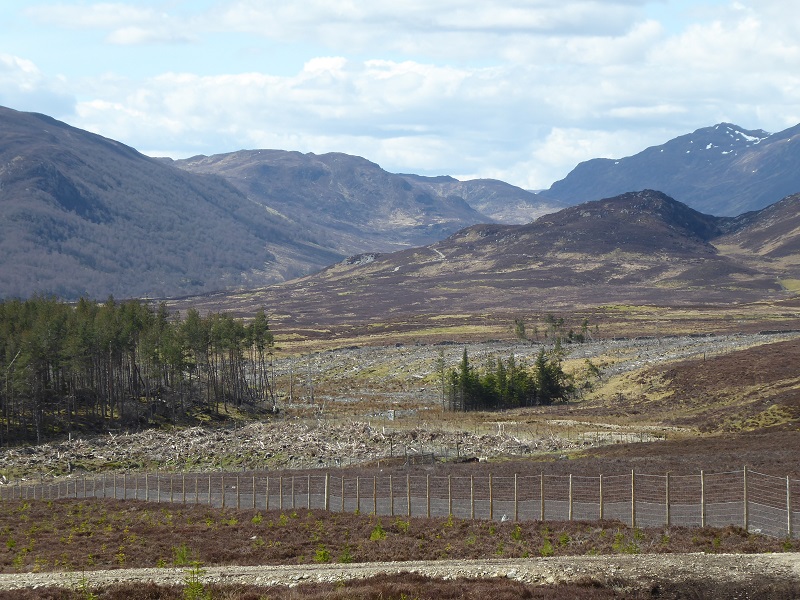
Back in 2014 Pitmain Estate did consult the CNPA about certain track “upgrades” (see 2014/0219/DET) including the track (its shown as a path on my old OS Map) up the east side of the Allt Mhor. The CNPA approved this to a point a little beyond the plantation (possibly the fence line in the photo above)
 A new track has now been extended at least 500m beyond the end point previously agreed by the CNPA. If the track in front of the gate needed planning permission in 2014 that on the other side clearly should have required it too. In my view therefore the estate – apparently under Savill’s management – has created yet another unlawful track.
A new track has now been extended at least 500m beyond the end point previously agreed by the CNPA. If the track in front of the gate needed planning permission in 2014 that on the other side clearly should have required it too. In my view therefore the estate – apparently under Savill’s management – has created yet another unlawful track.
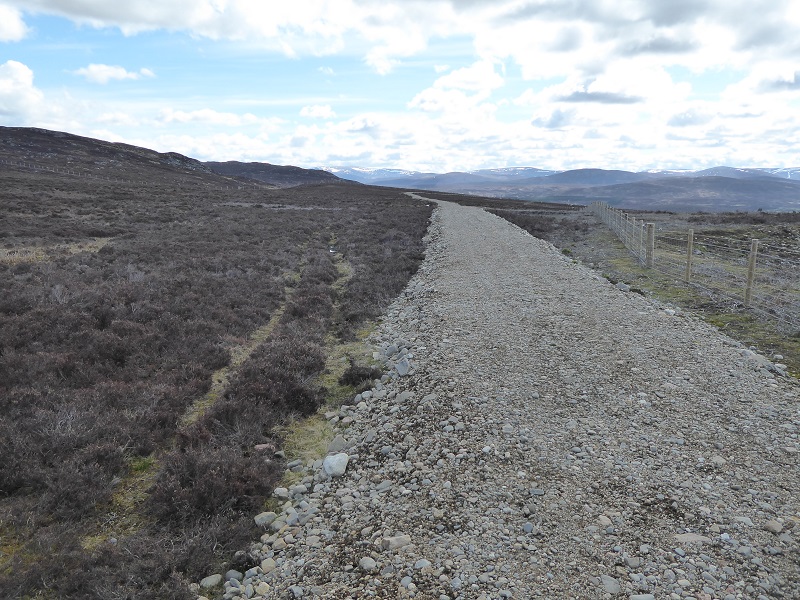
While Savill’s could try and claim this is just track repair and maintenance, there is plenty of evidence to show that the new track follows a different line to the older path/track. It is thus clearly new and should have had planning permission.

The track has been poorly constructed with aggregate dumped on the moor, with its sides already eroding, culverts unfinished and large drainage channels which further impact on the ecology of the moor. This is an estate littered with Welcome to the Moor signs which claim that the land is so sensitive that walkers need to keep to the path
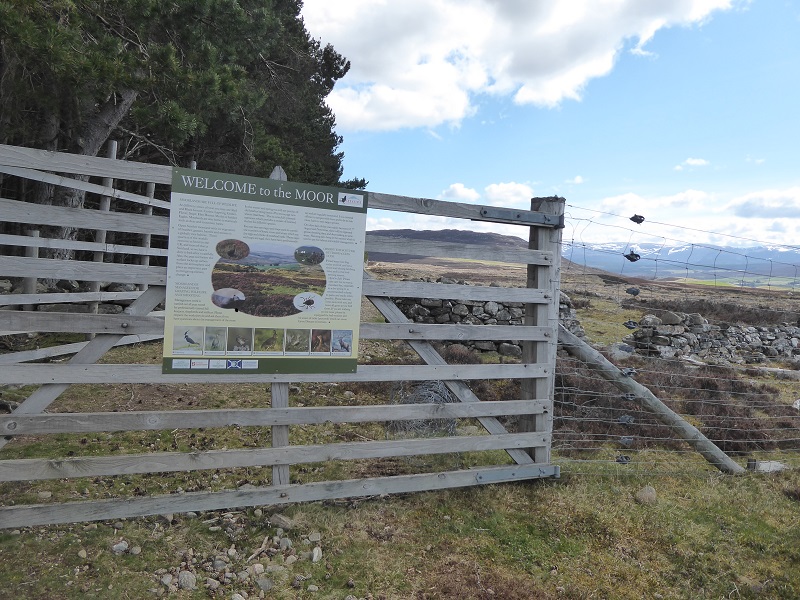
The track that the CNPA did approve, hasn’t prevented further track creep as part of ever more intensive moorland management:
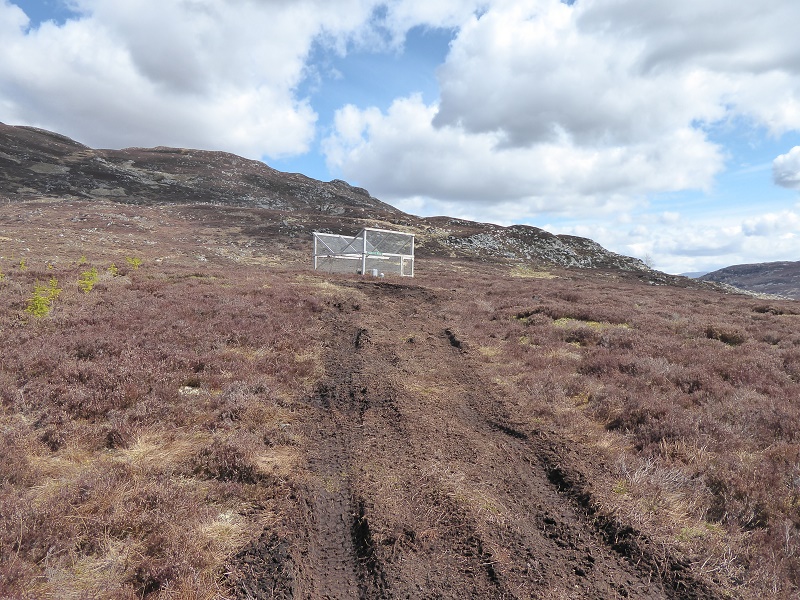
The new section of track is likely, in my view, to be extended further unless the CNPA takes wider measures to bring vehicle use under control in the National Park. Across the moor above and to the west of the new track there is a rectangular plantation accessed by just one gate:
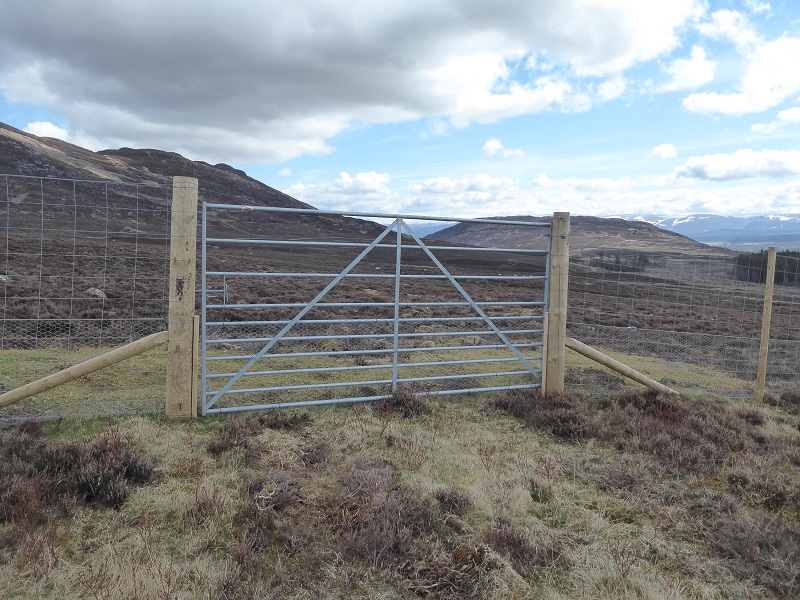
There is no sign of a track at present to this gate but why install such a large gate unless its intended to bring vehicles here? And the obvious connecting route is one we walked, across to the Allt Mhor. On current logic therefore, it wouldn’t be long before the estate felt justified in “upgrading” a further section of old landrover track up the Allt Mhor:

Or if not to connect to the plantation, to remedy the damage caused by ever more intensive management of the grouse moor.
What needs to happen
While I welcome the fact that the CNPA, both Board and senior staff, have publicly acknowledged the terrible impact of hill tracks on the landscape of the National Park, wish to stop this and are now trying to take more effective enforcement action – which is to be particularly applauded – what is happening at Pitmain and Glen Banchor illustrates they are unlikely to be successful without a far wider range of controls than are currently available to them.
The problem is two fold. First, planning enforcement is a slow, cumbersome and time consuming process. For the CNPA to deal with all the issues highlighted in this article could take a year of staff time and this is not replicable across the National Park. The second is that modern vehicles are so good that they can be driven anywhere and this, coupled with the intensification of grouse moor management, means that new tracks are being created the whole time. Inevitably they erode and the CNPA is faced with the dilemma of choosing between a new track or the risk of yet further erosion. This is a lose lose position and incompatible with the CNPA’s professed aim of preventing track proliferation across the National Park.
While current planning processes could be improved – all estates should be required to follow Glen Feshie’s example and adopt clear standards for tracks and enforcement could be more robust – unless the CNPA take steps to control off road use of vehicles they will not address the fundamental issue. My own belief is they could partially address this through their byelaw making powers. Byelaws could for example requireg all off road use of diggers outside of approved developments to have a permit would help prevent the construction of new tracks as featured here. And byelaws could also be used to control use of all vehicles entering Wild Land Areas and other protected sites. However, it may also be the case that the CNPA needs new powers.
Its time therefore, I believe, that the CNPA took a wider look at the proliferation of hill tracks and considers them not just from a planning perspective – and I repeat, all who care about the landscape should welcome the more robust approach they are taking to planning enforcement – but from a wider land-use perspective. Greater control over how grouse shooting and deer stalking are managed would do more than anything else to stop the continued proliferation of hill tracks.

Do nothing, these tracks provide excellent access for walkers and cyclists!
I read this blog entry with mounting frustration. So long as estates continue to pay less than lip service to landscape conservation – because, let’s face it, most of them couldn’t give a t*** – the CNPA and any other body or individual seeking to halt this advancing plague will have their work cut out. Savill’s have cobbled together an application that is incomplete because they hope they’ll get away with it and won’t have to produce anything coherent. It’s called chancing your arm, and it often works.
Yet another example of agents coming up with specious and transparent justifications for flouting planning regulations
I agree with Bill Reod. Do nothing. I enjoy using tracks like these.
Is using tracks like these for access not just laziness on the part of the walker? Do we really want a network of tracks for mountain bikers criss-crossing the hills and moors of Badenoch? The visual impact on the landscape of Glen Banchor and other similar areas is dreadful, and will only get worse if estates are able to do this without planning controls. Do walkers and bikers rate this ease of access above the beauty of the landscape they purport to enjoy?